Flycatchers, pygmies and baby herons in the ruins
No. 178
I can hear the baby herons at all hours right now, in the trees behind our bedroom door. Asking for more, I guess, though their manner of doing so is rather mellow compared to our young. The bird books call it “tik-tik-tik,” which is about right, but doesn’t really convey the constancy of it, or the machine quality. It’s like the sound of a two-stroke motor at low idle, and when they’re at it, one hears a lot more than three tiks. An indication, I suppose, that our new neighbors have a lot of young mouths to feed.
There are a lot of unfamiliar sounds in the air around here right now, as the migrants move through, drawing bands of curious human fans with extra eyes:
The great blue herons are year-round residents, a very common sight along the urban river, even in more densely urbanized stretches. But this is the first time we’ve had a nest this close to our home. Two of them, actually, in one of the tall cottonwoods that grow in the floodplain. We can’t see them from our back door, now that the trees are fully foliated, but the hatching of their fledglings means we can hear them all the time.
For several years now, there’s been a bigger rookery of a half-dozen nests established in a solitary sycamore behind the ruins of the muffler shop where you could also get your taxes done—I devoted a subchapter to it in Empty Lots, and have written about it here before—and it seems more pairs are moving in. It’s affirming that so many of these birds have found viable habitat ten minutes from downtown Austin, in a tree-lined stretch of urban river between a municipal dam and the next big creek that discharges the filth of the human settlement. Then you get to wondering if they’re here because it’s the only place they could find.
Walk out of our front gate, and you find yourself in what seems at first to be exceptionally unlikely habitat—a neighborhood of old factories, warehouses and machine shops along major east-west thoroughfares. But even there, the upland savanna this must once have been persists. One of the secondary streets mostly holds the back side of businesses. On weekday mornings you can see the tanker trucks come and go carrying loads of new motor oil to keep the machines running, hear the compressed gas tanks blowing off pressure from the Air Supply depot, and dodge the municipal buses deploying from the yard. As warm weather arrives, you can also see the black-bellied whistling ducks who come here to breed cavorting in the tall pecans and hackberries that line the expansive back yards of those businesses.
Sometimes they gawk around on the dead trees we line the street with:
Saturday morning the new puppy and I walked down that corridor. When we turned the corner to the abandoned lighting factory, where the sparrows have colonized the eroded fiberglass underside of the loading dock cover, we found the gate that secures the site wide open, so we poked our noses in to admire the outlaw murals that line the cavernous interior walls. As we continued down the street, I heard unfamiliar bird calls, so I tried out Cornell’s Merlin app, and with its aid spotted my first great crested flycatcher, fluttering around in the lush foliage of a big pecan behind the chain link of the old truck yard. This one had a more pronounced and narrow crest than the ones in the guidebooks, more punk mohawk than new wave coif.
The app also claimed to have heard a northern pygmy owl. I didn’t see it, though we did see a barred owl out hunting before nightfall Friday right over the Valero station on East Cesar Chavez, perhaps prowling for mammals on the move as the storm blew in. Other friends and neighbors have reported seeing spectral grey hawks over the skies of East Austin the past couple of weeks, likely Mississippi kites.
When I looked up the great crested flycatcher in the field guides, it said they are typically found in mature forests. I wondered if this post-industrial riparian upland is a remnant of one, dotted with a few surviving trees, or just good enough for birds who can no longer find enough of their prime habitat. I also thought about the piece I read in the business press a while back, announcing the purchase of that huge urban acreage for redevelopment as a mixed-use project, and wondered if the birds will keep coming if and when that happens.
Looking at this picture of one of the abandoned lighting factory from Monday morning, when I suspect one of Austin’s lesser-known masked crimefighters had been working late, you can see how neither the Chamber of Commerce types nor the Sierra Club types would think much of the current condition of this neighborhood, even if you showed them the pockets of habitat hidden behind the urban blight. But I wonder what it will take to get our planners and promoters to start to place real value on creating habitat for other species as they build more shelter for us, and for the capital we accumulate as if it were the most valuable resource on Earth.
Just because May Day came and went and no one else seemed to notice doesn't mean you should stop dreaming of revolution, and admiring the flowers, and realizing they go together.
The Roundup
The best bit of news you can use from our animal neighbors last week was the research report just published in Communications Biology by Harvard ecologist Martin Surbeck and colleagues who spent three decades of grueling field work figuring out how female bonobos have learned to use coalition-building to manage aggressive males and achieve matriarchal power. The recap from the NYT:
Scientists have long wondered how female bonobos maintain their matriarchies. In a study published Thursday, researchers who tracked six bonobo communities in the Democratic Republic of Congo over nearly 30 years provided the first evidence-based explanation for how female bonobos gain and sustain dominance over the males within their communities. Females, they found, form coalitions against males to tip the balance of power in their favor.
When a male bonobo steps out of line, nearby females will band together to attack or intimidate him. Males who cower in the face of such conflicts lose social rank, while their female adversaries gain it, affording them better access to food, and mates for their sons.
One wonders how quickly our species might figure out how to do the same, learning from these cousins with whom we share 99% of our DNA.
It also reminded me of Audrey Schulman’s incredible novel Theory of Bastards, about a woman studying bonobos at a research facility in the Midwest when a disaster strikes, which I was lucky to read as a judge for the 2019 Philip K. Dick Award (which award the book won).
At the other end of the spectrum, the 283 eligible voters in the unincorporated tip of South Texas proposed to be turned into the city of Starbase voted to do just that. Yes, most of them are SpaceX employees.
Are there tariffs on Mars?
I had a blast talking with Mark Lynch at WICN radio in Worcester, Mass., for his show Inquiry. And I’m really looking forward to joining the folks at Urban Austin Reads for a discussion of A Natural History of Empty Lots this coming Friday, May 9, 7 p.m., at First Light Books.
Lastly, here’s a not-bad phone video of the caracara visiting friend Douglas Ross and I saw last weekend enjoying Sunday brunch on the Colorado:
And some of the first full retama bloom of the season, a signal that summer is coming soon:
Have a great week.



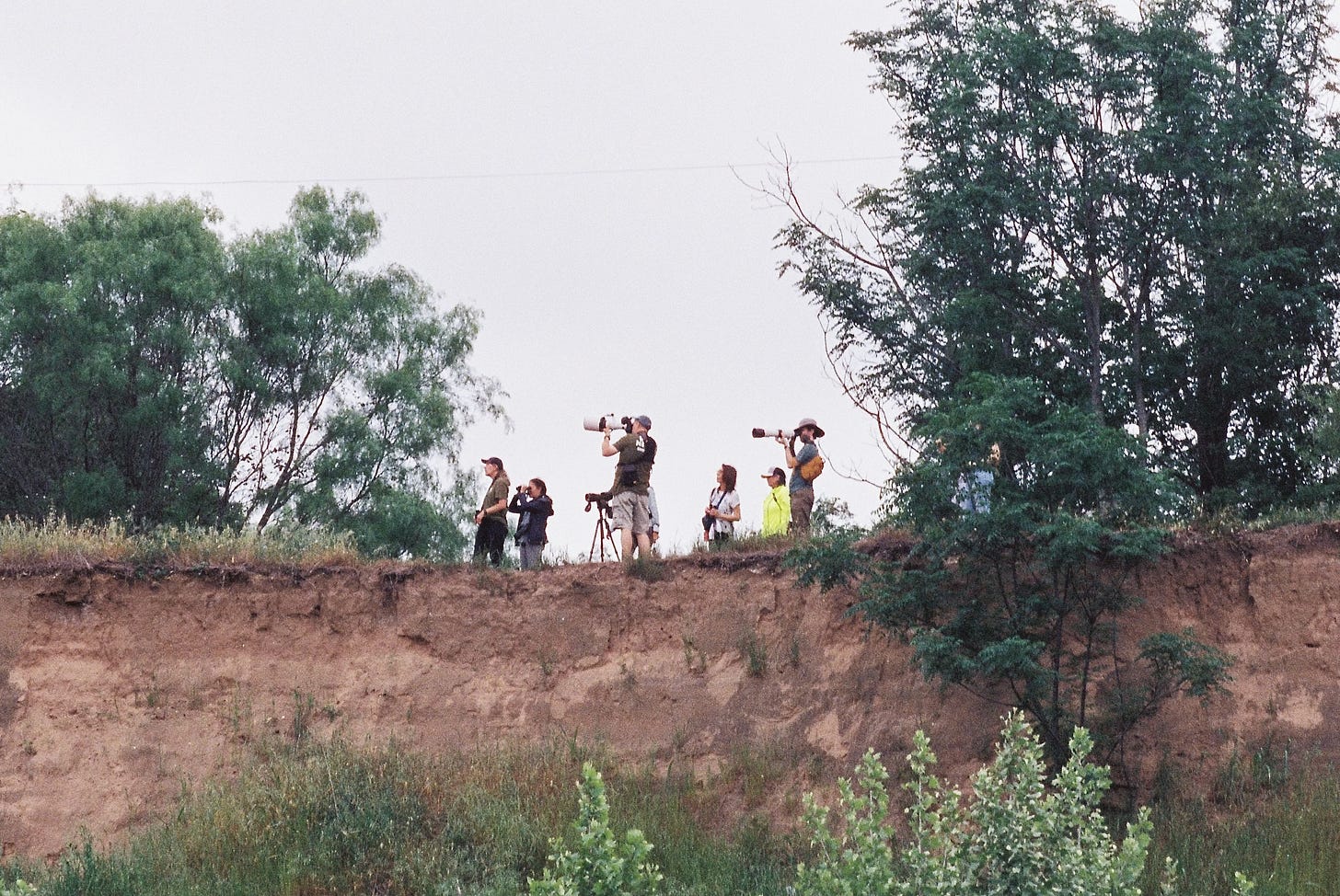
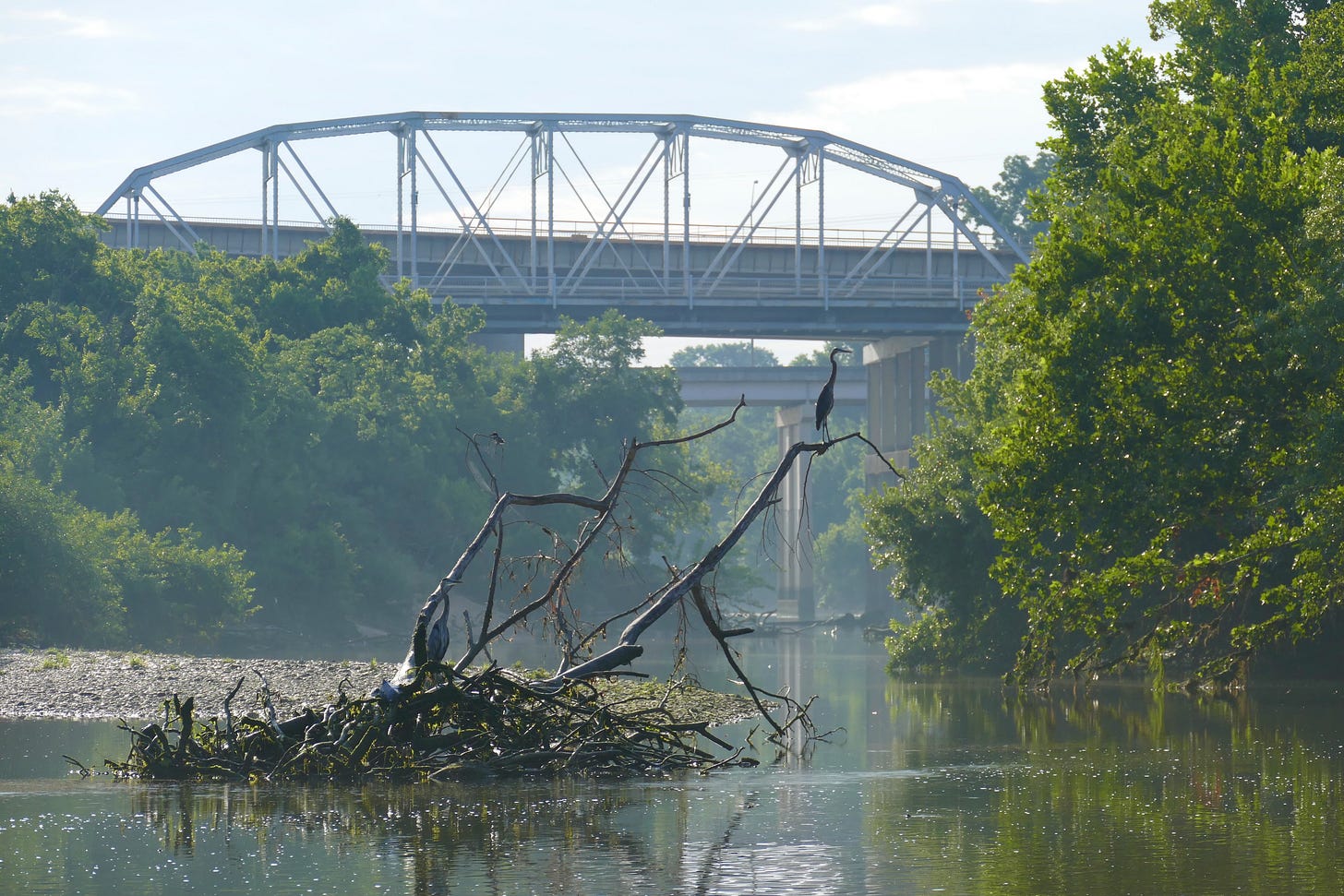
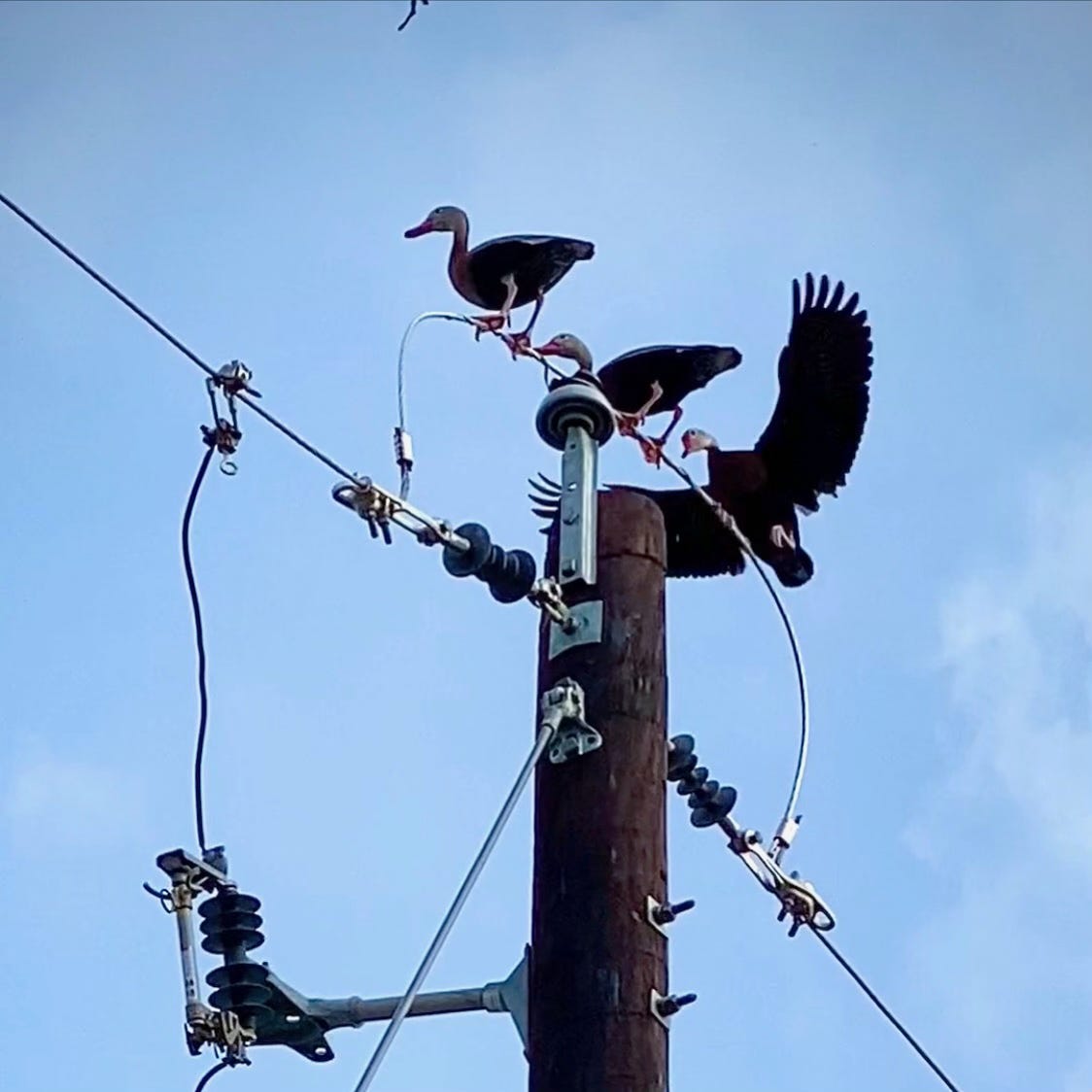

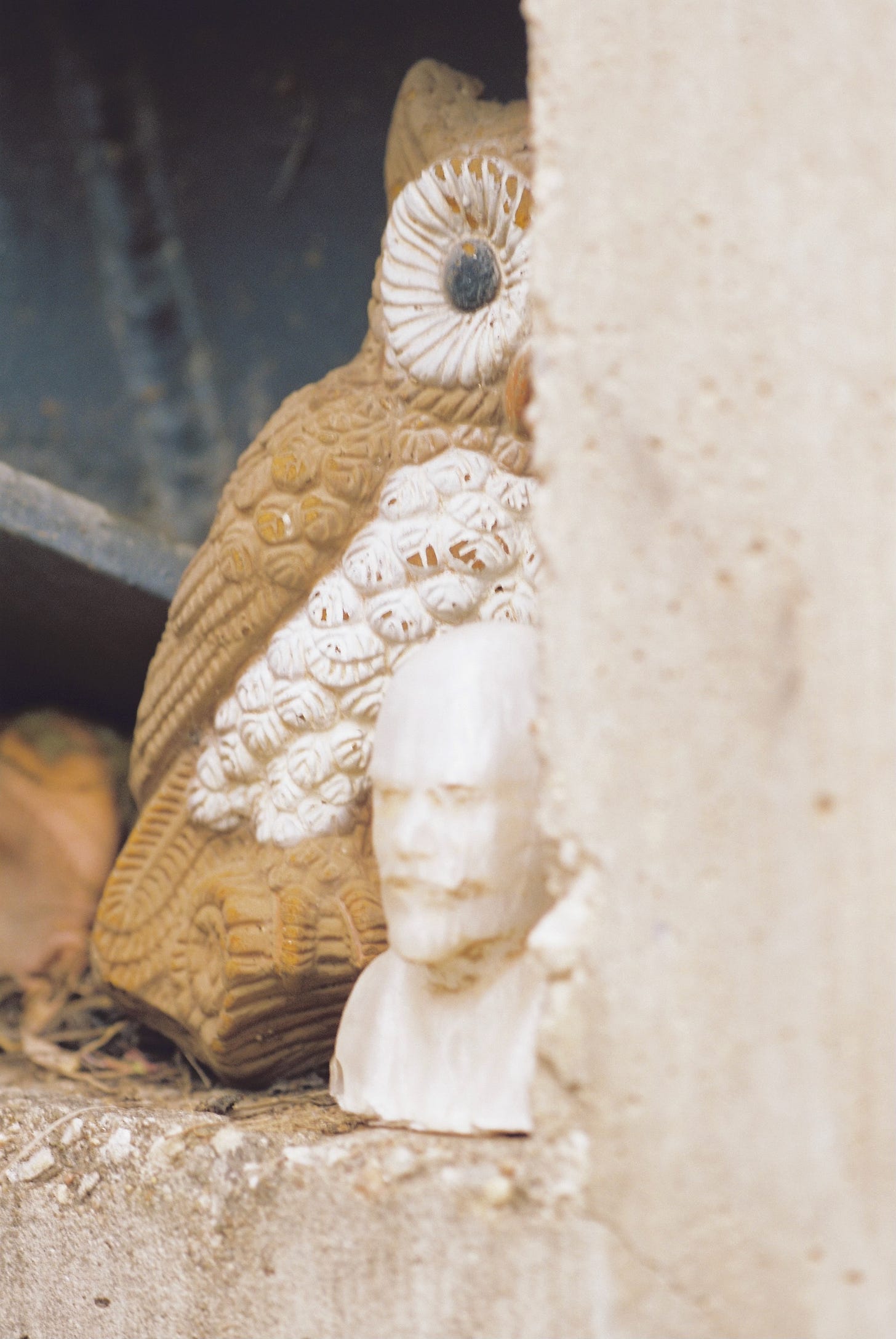

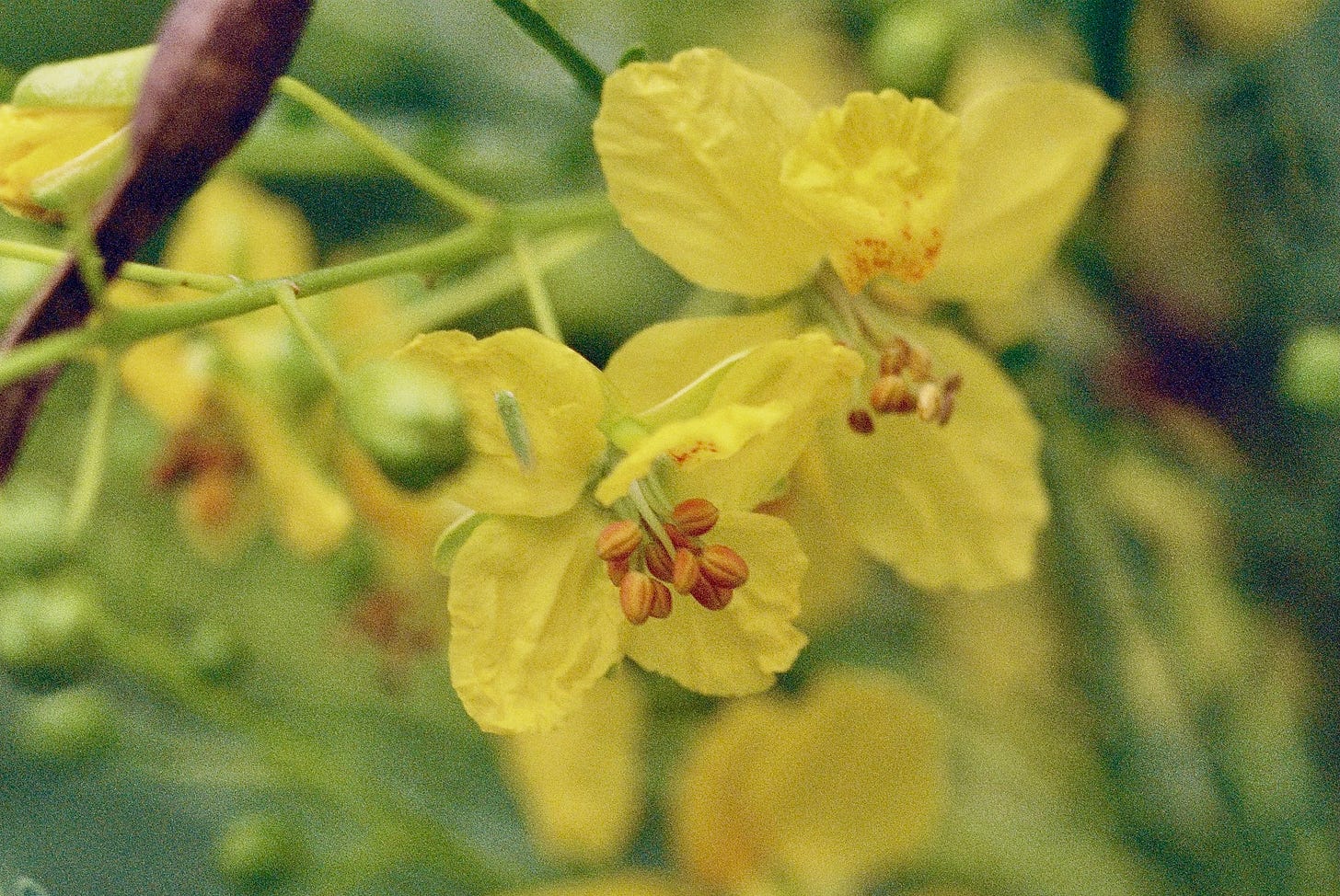
I'm always struck with awe at your writing.
I’ve been meaning to thank you for your recommendation on the Cornell Bird app. It’s added a whole new dimension to our morning walks discovering the urban woodlands around the northern edge of Baltimore.